|
Low-level laser therapy
(LLLT) is the use of a low-powered laser that emits
specific wavelengths of light in the visible red and/or
far infrared range for therapeutic purposes. This involves
the application of low power light to areas of the
body in order to stimulate healing. It is also known
as cold laser, soft laser or low intensity laser.
The reason why the technique is termed LOW-level is
that the optimum levels of energy density delivered
are low when compared to other forms of laser therapy
as practiced for ablation, cutting, and thermally coagulating
tissue. more
Controlled research into the effects of low level
laser is currently being conducted in various European
centres and in Japan.
Knee injuries and conditions treated by low-level
laser include tendonitis, bursitis, meniscus tears,
runners knee/chondromalacia patella, knee joint effusion,
iliotibial band syndrome, osgood schlatters disease,
osteoarthritis and rheumatoid arthritis, and much more
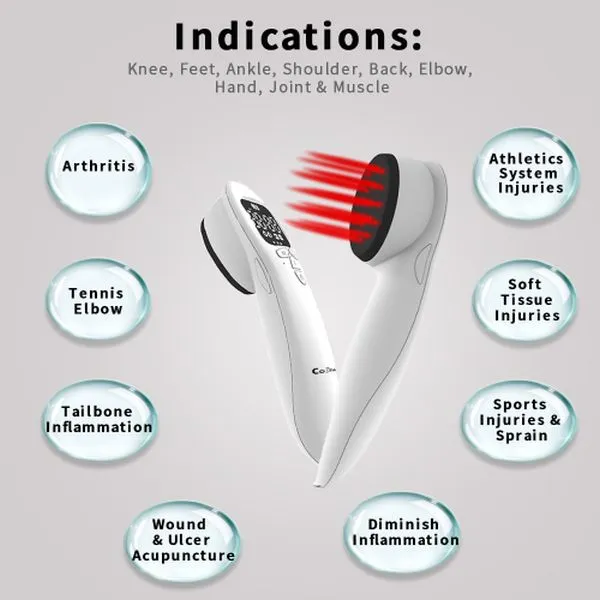
Indications:
Knee, Feet, Ankle, Shoulder, Back, Elbow, Hand, Joint & Muscle
Arthritis
Tennis Elbow
Tailbone Inflammation
Athletics System Injuries
Soft Tissue Injuries
Sports Injuries & Sprain
Wound & Ulcer Acupuncture
Diminish Inflammation
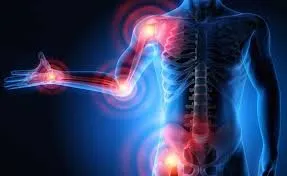
How does laser work for inflammatory
therapy?
-laser therapy improves Ca++ uptake in the mitochondria.(mitochondria
in the red cells)
-ATP production and synthesis are significantly enhanced,
contributing to cellular repair, reproduction and functional
ability.
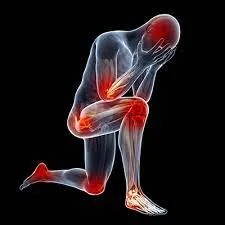
- Laser-mediated vasodilation enhances the transport
of nutrients and oxygen to the damaged cells and facilitates
repair and removal of cellular debris.
| Low-level laser therapy (LLLT) is the use of
a low-powered laser that emits specific wavelengths
of light in the visible red and/or far infrared
range for therapeutic purposes. This involves the
application of low power light to areas of the
body in order to stimulate healing. It is also
known as cold laser, soft laser or low intensity
laser. |
-Enhanced lymphocyte response.
-Increased angiogenesis.Laser-induced increases in
NO and the growth factors.
-Decreased C-reactive protein and neopterin levels.
Laser therapy has been shown to lower the serum levels
of these inflammation markers, particularly in rheumatoid
arthritis patients. Decreased marker levels are indicative
that the combined effects of all LLLT-induced anti-inflammatory
actions are effectively reducing the inflammatory process.

lasers are not magical; it is the light
that they produce that yields the biological effect
Low-level laser therapy may sometimes provide
an effective alternative to surgery or medications—without
accompanying side effects. It can help regenerate tissue,
reduce inflammation, decrease pain, and increase immunity,
and research has shown its efficacy in treating many
conditions.
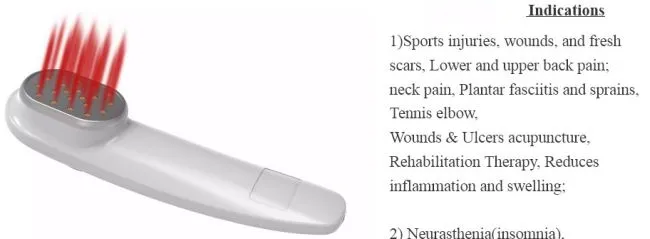
How does laser therapy Heal wounds?
-Enhanced leukocyte infiltration. .
-Increased macrophage activity. LLLT accelerates macrophage
activity in phagocytosis, growth factor secretion and
stimulation of collagen synthesis.
-Increased neovascularization. Endothelial cell regeneration
is accelerated.
-Increased fibroblast proliferation. LLLT stimulation
increases collagen production.
| "Low-level lasers emit light in the
red and infrared range. Red and infrared light
penetrate
deeply
into human tissue, where the light energy is absorbed
and turned into biochemical energy. By increasing
cellular energy in the treated area, low-level
laser therapy is believed to speed healing and
reduce inflammation and pain. There are no reported
side effects." |
-Early epithelialization. Laser-stimulated acceleration
of epithelial cell regeneration speeds up wound healing,
minimizes scarring, and reduces infection opportunities.
-Enhanced cell proliferation and differentiation.
Laser-induced increases in NO, ATP and other compounds
that stimulate higher activity in cell proliferation
and differentiation into mature cells.
-Greater healed wound tensile strength. By increasing
the amount of collagen production/synthesis and by
increasing the intra and inter-molecular hydrogen bonding
in the collagen molecules, laser therapy contributes
to improved tensile strength.
In 2007, low-level light therapy (LLLT) was approved
by the FDA as a treatment for hair loss

How to Use?
1st week: Start with the secondary power on pulse mode
2nd
week: Adjust to maximum power on pulse mode
3rd week:
You can start using it on maximum power on constant
mode
Duration: Please use 2-3 times a day for about 10-20 minutes.
You can set 15x time settings, 15-60 minutes
Distance
from Skin: Keep
a little distance of 1-2 inches away from the skin
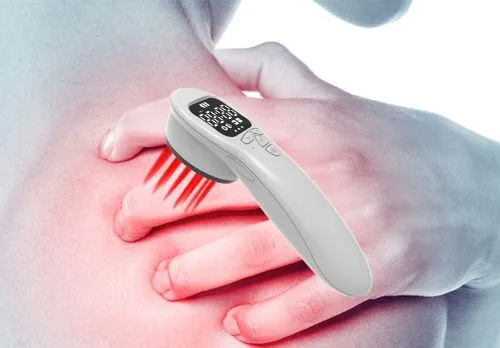
History of laser therapy for pain?
Infrared light penetrates to the inner layers of the
skin at about 2 to 7 centimeters deep. Hence, it reaches
the muscles, nerves and even the bones. Many studies
have shown that a frequency of infrared light, with wavelengths
from 700 to 1,000 nanometers, is best used for healing
inflammatory conditions.
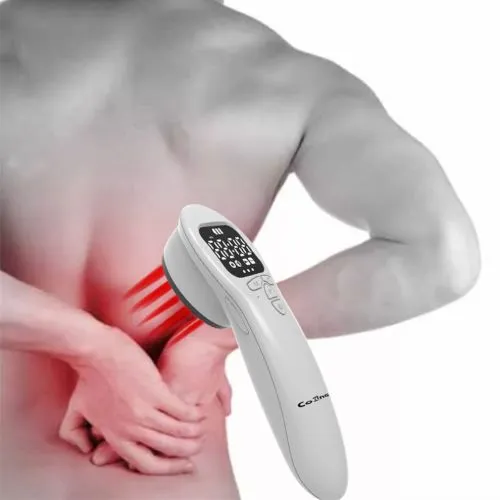
The use of electricity for healing purposes began in
2,750 BC when people used electric eels to give electric
shocks. Electricity and magnetism were used in people
with just little success. However, in 1975, transcutaneous
electrical stimulation (TENS) was developed to treat
chronic pain. It was not until recently that infrared
therapy was developed to improve wound healing, reduce
the pain caused by arthritis, boost endorphin levels,
and bioactivate neuromodulators.
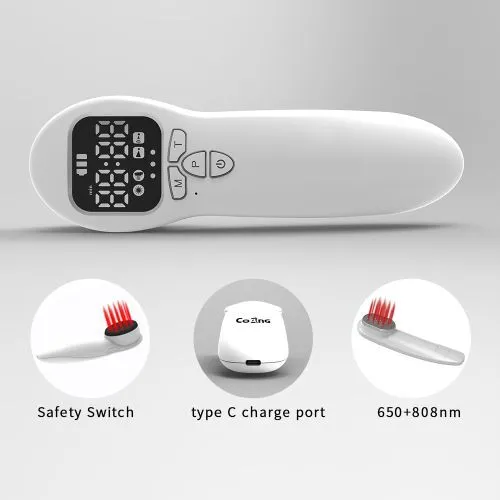
1. Inside is lithium battery 1800mAh, it can be rechargeable
.
2. 808nm and 650nm combine together
3. Working mode : Pulse and continuously can be selection
4. Treatment time can be adjusted
5. Power intensity can be adjusted also .
6. 17 laser beam in one device
7. Type C and USB charge port.
8. 5200mAh lithium battery powered .
9.Easy to use.
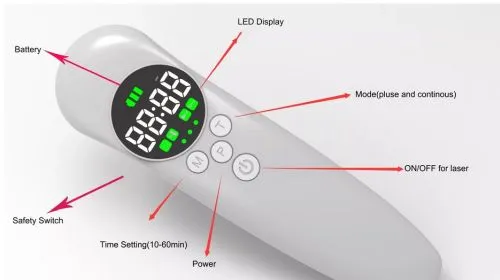
 |
Affordable
Cold Laser Therapy
Package
Includes:
1x low-level cold laser device
1x Power adapter
1x Zipper carry case
1x Manual
1x Warranty card
1x safety glasses with case

Recomended Retail $US250.00
Click on the NZ$ price to see currency
conversions |
|

